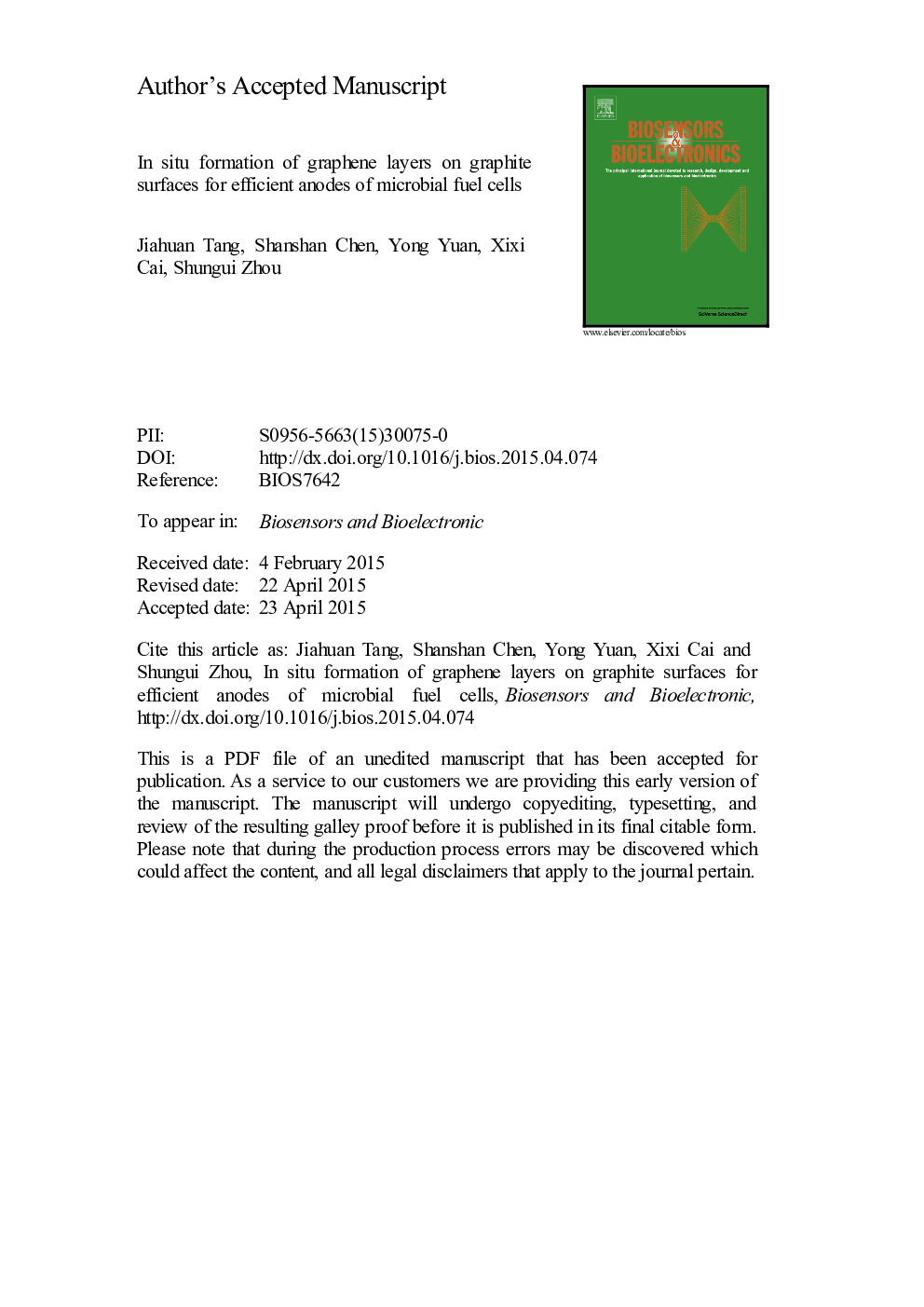| Article ID | Journal | Published Year | Pages | File Type |
|---|---|---|---|---|
| 7232032 | Biosensors and Bioelectronics | 2015 | 29 Pages |
Abstract
Graphene can be used to improve the performance of the anode in a microbial fuel cell (MFC) due to its good biocompatibility, high electrical conductivity and large surface area. However, the chemical production and modification of the graphene on the anode are environmentally hazardous because of the use of various harmful chemicals. This study reports a novel method based on the electrochemical exfoliation of a graphite plate (GP) for the in situ formation of graphene layers on the surface of a graphite electrode. When the resultant graphene-layer-based graphite plate electrode (GL/GP) was used as an anode in an MFC, a maximum power density of 0.67±0.034 W/m2 was achieved. This value corresponds to 1.72-, 1.56- and 1.26-times the maximum power densities of the original GP, exfoliated-graphene-modified GP (EG/GP) and chemically-reduced-graphene-modified GP (rGO/GP) anodes, respectively. Electrochemical measurements revealed that the high performance of the GL/GP anode was attributable to its macroporous structure, improved electron transfer and high electrochemical capacitance. The results demonstrated that the proposed method is a facile and environmentally friendly synthesis technique for the fabrication of high-performance graphene-based electrodes for use in microbial energy harvesting.
Related Topics
Physical Sciences and Engineering
Chemistry
Analytical Chemistry
Authors
Jiahuan Tang, Shanshan Chen, Yong Yuan, Xixi Cai, Shungui Zhou,
